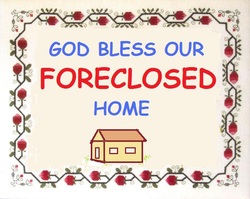
There are really 3 basic classes of mortgage: Fixed, Variable and Specialty.
Fixed mortgages come in 3 basic flavors: FHA, VA, and Conventional. An FHA loan is a government insured loan, insured through mortgage insurance that is funded into the loan. These are great for first time homebuyers since the credit scores and down payment requirements are minimal and rates are competitive. Conventional loans are what our grandparents remember as the only option “back in the day”. These mortgages require a bit more of a down payment, typically 20%, and typically have terms of 10-30 years, though there are some fully amortized options for 40 and 50 year terms floating around out there now. VA loans are a lot like FHA loans, but are specifically for our service men and women (thank you to those of you who serve our great country!!!). The biggest benefit of a VA loan is that no down payment is required.
Variable Mortgages, or Adjustable-rate Mortgages (ARMs) come in all different flavors. FHA and Conventional mortgages have an adjustable option. There are also adjustable mortgages that give you a payment option, meaning you can choose to just pay the interest, you can pay an amount equal to what it would take to pay the mortgage off completely within 10 yrs., and usually a few options in between. Some mortgages even allow you to pay less than the interest that is accruing on to balance. All of these terms and rates can adjust weekly, monthly, annually, or remain fixed for a certain time period before adjusting. Some of these mortgages have taken flac for being the cause of the housing bubble and so many foreclosures in recent years. I would argue that again, there aren’t bad tools, just poorly selected ones used for the wrong purpose.
Specialty loans are exactly that, specialties. Each one has a specific use and can’t be used for other purposes. Streamlined-K loans and 203k loans are for the purchase of homes that need repair work, providing funds to do those repairs within the mortgage. Equity loans and Home equity lines of credit (HELOCs) allow you to access the “equity” in your home for various purposes. Bridge loans are used to access “equity” in a home that is on the market but has not yet sold to purchase another home. Reverse mortgages can be used by anyone over age 62 to access “equity in their home to enhance their lifestyle during the twilight of their lives.
As I said at the beginning, I believe each of these tools has a place, but we must take the time to educate ourselves so we know which tools to use.



 RSS Feed
RSS Feed
